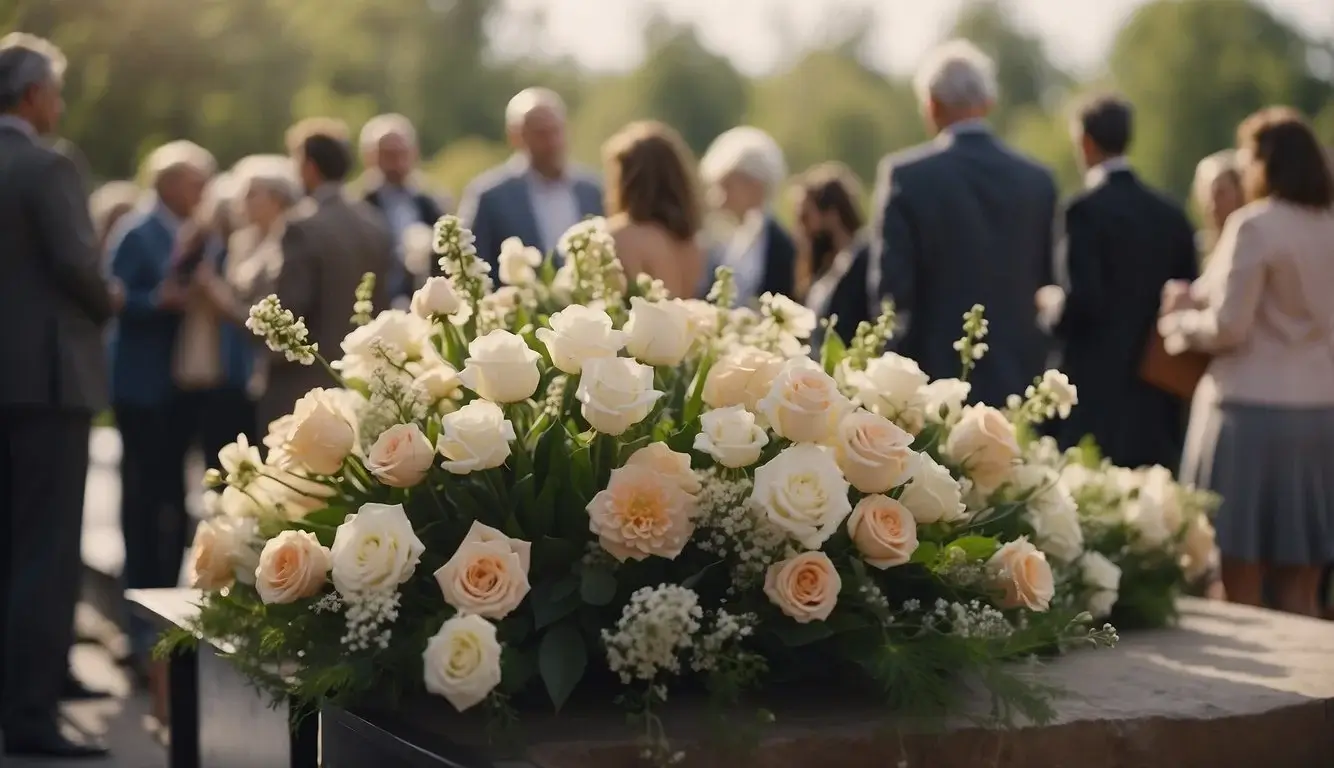I’ve devoted countless hours to researching and assembling essential guidelines on funeral visitation etiquette to help you understand the subtleties of how to behave. The result is a concise manual that I believe will reduce the anxiety that comes with participating in these grave events. Acquiring knowledge of the detailed norms surrounding visitations offers solace to the bereaved and honors the deceased, ensuring you act with respect and consideration during these pivotal times.
Whether it’s choosing the right attire, knowing when to arrive, or finding the words to express your condolences, this guide will equip you with the knowledge to navigate the visitation with poise. Engaging respectfully with grieving family members and understanding cultural and religious customs are crucial in showing your support and respect. Let this resource be your companion in providing comfort and consideration to those in mourning.
Key Takeaways
- Understanding visitation etiquette provides comfort to both you and the grieving family.
- Respect for cultural and religious traditions is essential during a visitation.
- Thoughtful communication and post-visitation support are essential ways to express sympathy.
Understanding Funeral Visitation

When attending a funeral, I need to understand the customs and the differences between the various pre-funeral events. This will help ensure I’m showing my respects appropriately.
Defining Visitation and Its Purpose
A funeral visitation is an event that allows me, along with other attendees, to offer my condolences and support to the bereaved family. It’s a less formal gathering, providing a chance for friends and extended family to come together, often before the funeral service. It’s an opportunity to express sympathy and share memories of the deceased.
Visitation vs. Wake vs. Viewing
Understanding the differences between a visitation, a wake, and a viewing is crucial:
- Visitation: This is typically a time to interact with the bereaved family, often without the presence of the deceased’s body. It is a chance for people to talk, share memories, and offer condolences.
- Wake: Historically, a wake was a vigil held the night before a funeral, with the deceased present, and it often has religious overtones, including prayers or rosaries, as described in Funeral Visitation Etiquette: Basic Guide To Visitations & Viewings.
- Viewing: A viewing tends to involve the presence of the deceased’s body, often in an open casket, and it allows me to pay my last respects directly to the deceased.
While each of these serves a different purpose, they all carry the same underlying importance of providing comfort and solidarity in a time of mourning.
Before Attending a Visitation
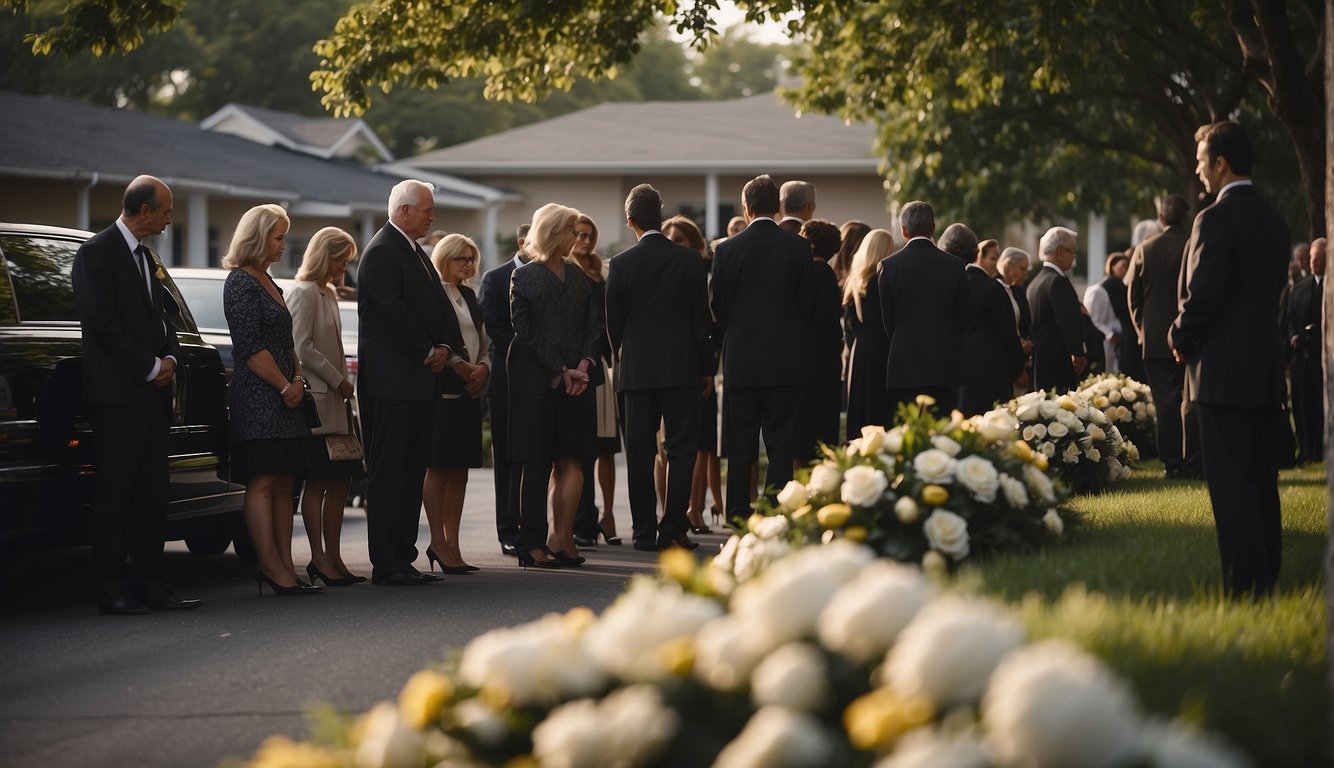
When I prepare for a visitation, I ensure I know the specifics of the event, choose my attire carefully, and select a thoughtful sympathy gift. These steps show respect and support to the grieving family.
Knowing When and Where to Go
I always check the details of the visitation meticulously. Visitations typically take place at a funeral home, church, or family residence. They can be scheduled for several hours and may occur over multiple days. It’s important to arrive on time or early to show proper respect. For detailed guidance on visitation customs, I find the article from Funeral Fundamentals very helpful.
Deciding What to Wear
Selecting the right attire is crucial. I adhere to the dress code specified, if any. When in doubt, I opt for conservative and modest clothing, often in dark or subdued colors. Whether I decide on a suit or a simple dress, my goal is to be presentable without drawing attention away from the ceremony. The website Ever Loved has valuable advice on choosing appropriate visitation clothing.
Choosing Appropriate Sympathy Gifts
A simple, heartfelt sympathy card is often sufficient, but I also consider bringing flowers or a charitable donation in the name of the deceased. Any gift should convey thoughtfulness and consideration for the bereaved. If I’m unsure about the type of gift, I check for any family preferences communicated through the funeral announcement or ask someone close to the family. For etiquette on sympathy gifts, US Urns Online provides clear insights.
At the Funeral Visitation
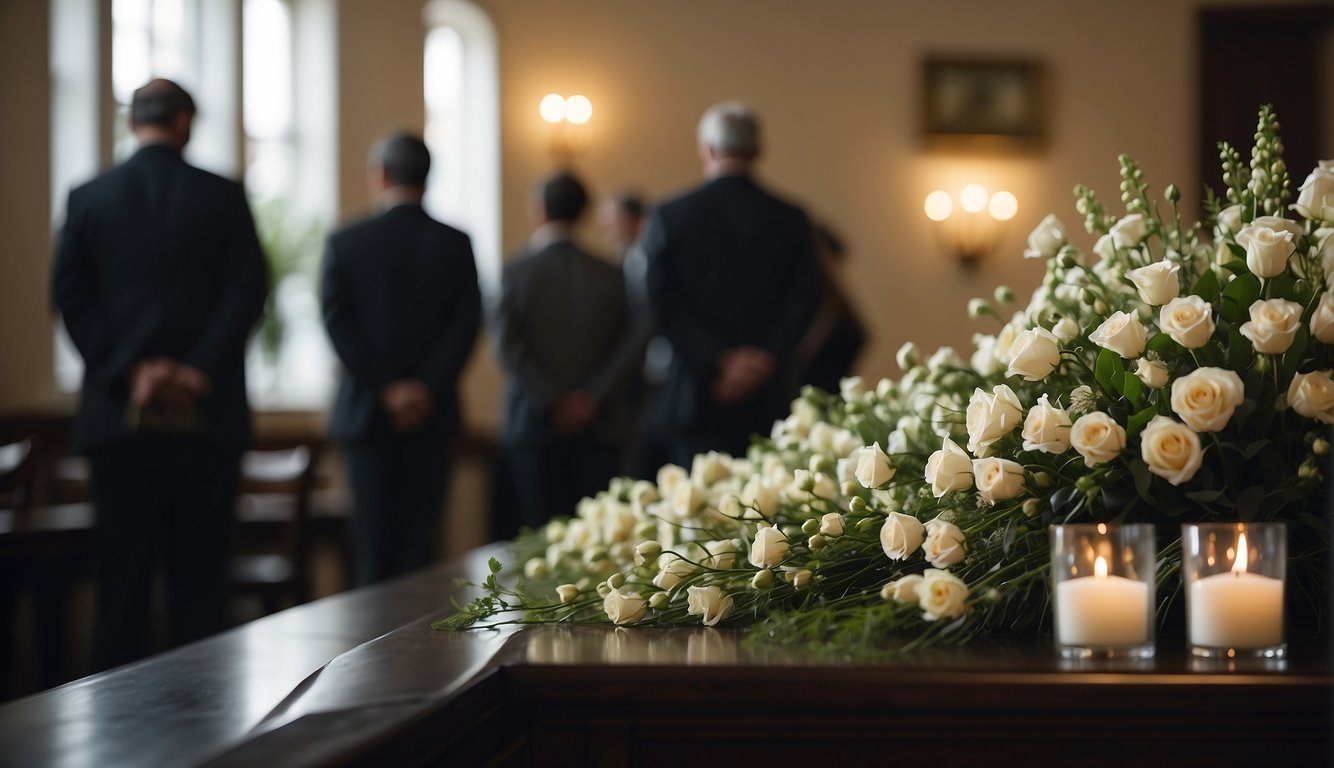
When I attend a funeral visitation, I keep in mind that it’s a time to offer support and pay respects. I must approach each aspect of the visitation with consideration and reverence.
Signing the Guest Book
As soon as I arrive, I make sure to sign the guest book. In doing so, I provide a tangible record of my presence for the family. I include my full name and, if possible, my relationship to the deceased to help the family place me later.
Interacting with the Grieving Family
When I interact with the grieving family, it’s essential to be genuine and brief. I offer my condolences with a simple, heartfelt expression like, “I’m so sorry for your loss; your mother was an incredible person.” I remember speaking softly and smiling to convey warmth.
Paying Respects to the Deceased
I step up to pay my respects if there is an open casket. I pause for a moment of silence, reflecting on my memories with the deceased. I always ensure to maintain a respectful distance and demeanor.
Navigating Seating Arrangements
I understand that seating arrangements are typically reserved for immediate family and close friends. I look for signs or ushers for guidance and choose a seat further back if I’m an acquaintance or distant relative. I need to respect the proximity to the family during this time.
Cultural and Religious Considerations
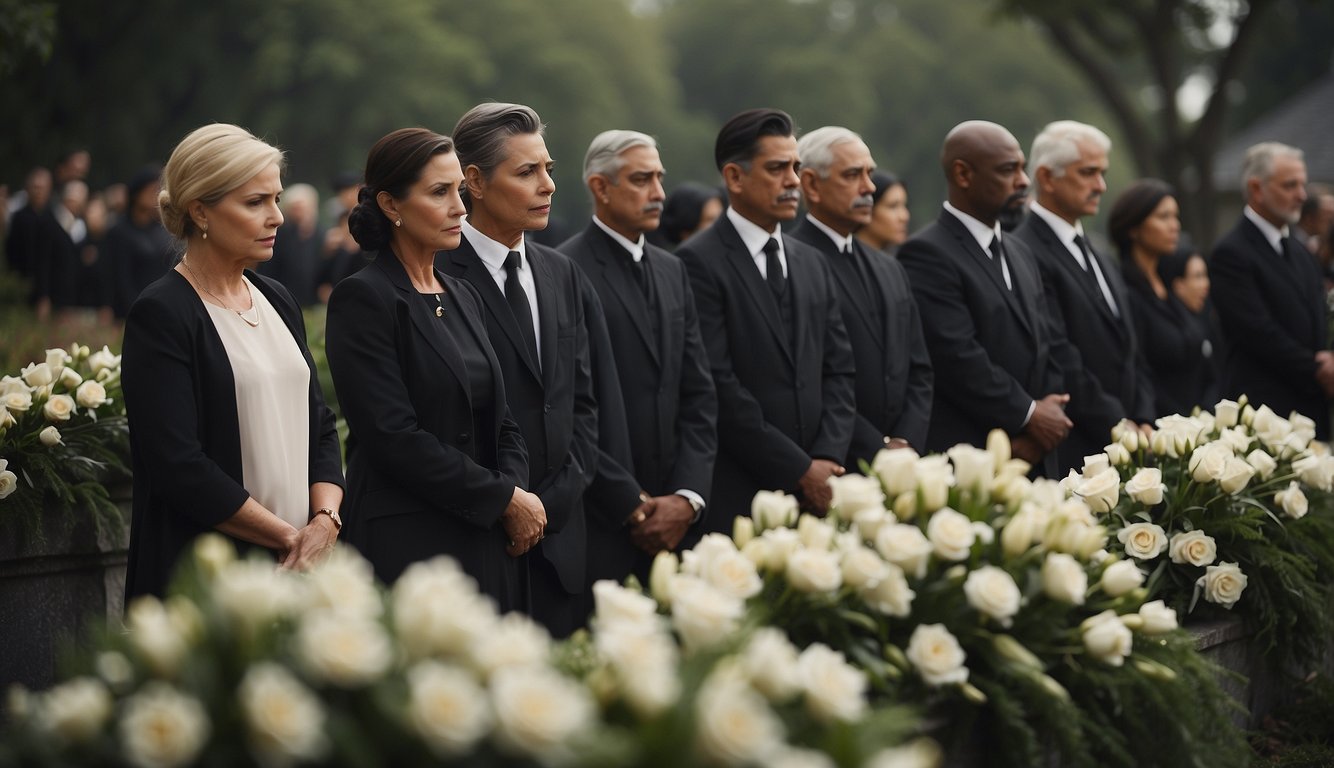
When I attend a funeral, I always take a moment to consider the cultural and religious beliefs that might be at play. It’s important to show respect and engage appropriately according to these traditions, which can vary greatly.
Recognizing Diverse Funeral Traditions
Every culture has its own customs and traditions regarding honoring the deceased. For instance, Catholic funerals may include a rosary service the night before the funeral, which is a series of prayers for the departed. I dress modestly and arrive on time if I’m participating in this ritual. While at the funeral itself, held often in a place of worship like a church, it’s customary to follow the liturgy and participate in the communal responses.
Participating in Religious Rites
When I join in religious rites, I understand that they are deeply rooted in the beliefs and practices of the faith community. If I’m not familiar with the specific rites, I find it’s best to follow the lead of those around me. For instance, in many religions, it’s common to find rituals involving chanting, prayer, ceremonial readings, or silence. I always pay close attention to the clergy or leaders, as their guidance helps me show my respects without unintentionally disrespecting their traditions.
Etiquette for Communicating Support
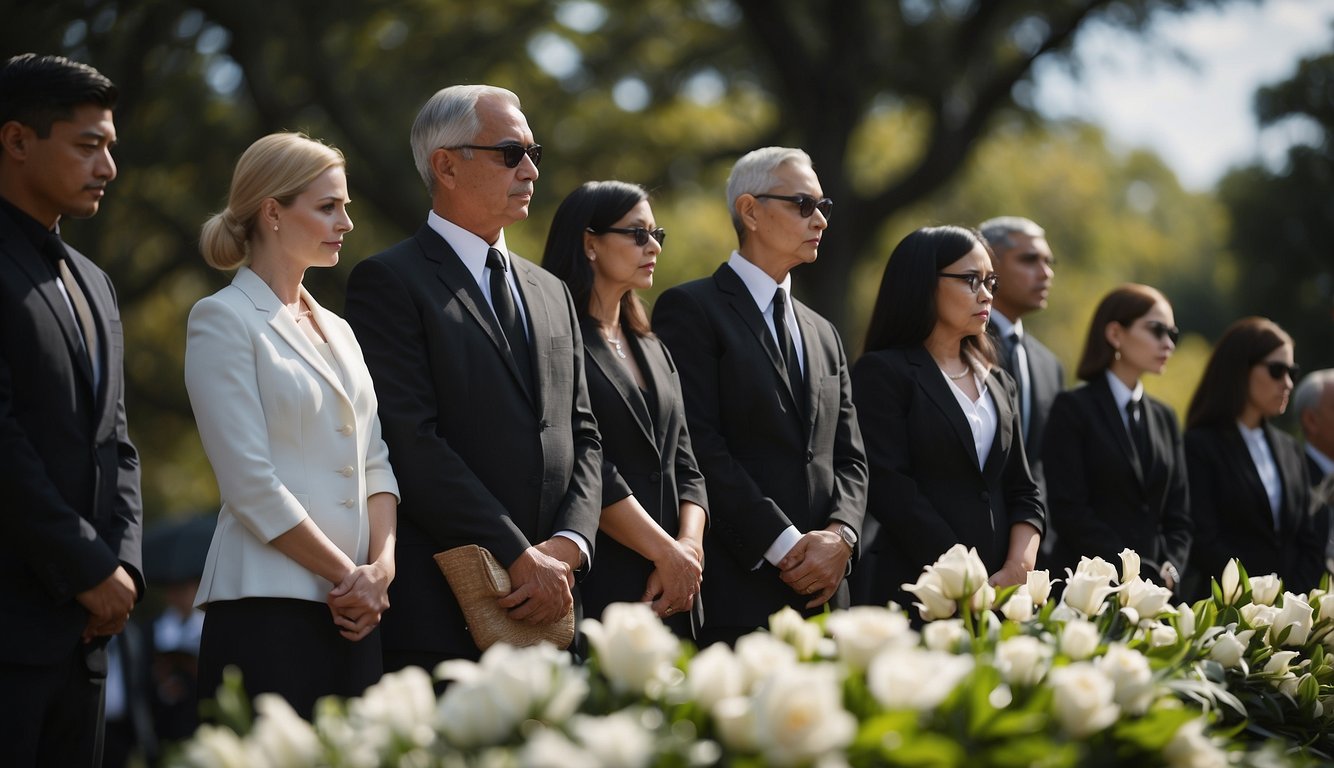
When attending a visitation, I understand that my role is to provide support to those grieving. Choosing the right words and behavior is paramount in conveying comfort and respect.
Offering Comforting Words
I gently express my condolences with phrases like, “I’m here for you,” or “I’m so sorry for your loss.” These comforting words can provide a sense of solace. I avoid using clichés or making any statements that could minimize the family’s pain, instead offering my genuine and heartfelt sympathy.
Maintaining Appropriate Behavior
I know that my demeanor should be one of quiet respect. I make sure to maintain appropriate behavior such as speaking in soft tones and sharing a memory of the deceased if it brings a glimmer of comfort. A touch or hug can be welcome, but I always read the room and follow the family’s lead. A light-hearted memory is fine if it’s respectful and may even bring a moment of welcome laughter in a somber setting.
Post-Visitation Considerations
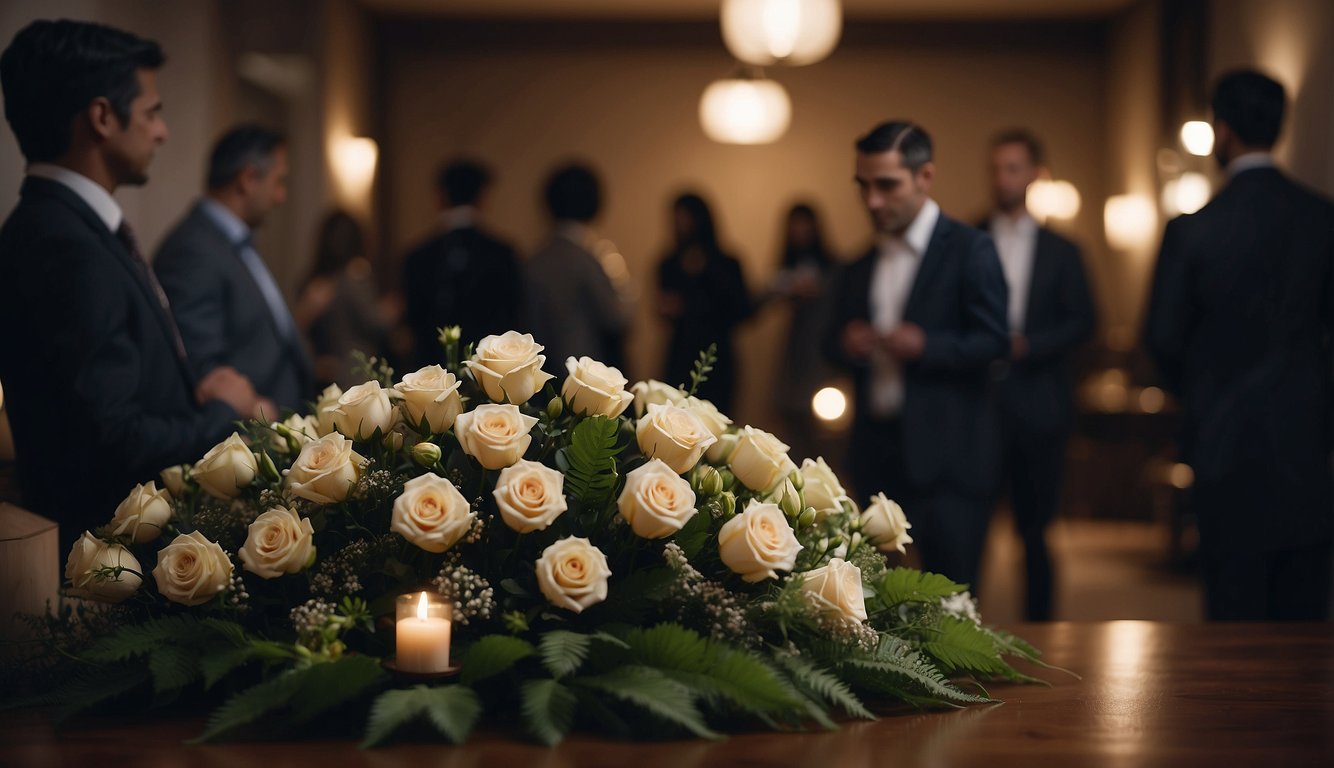
After attending a visitation, I find that it’s crucial to show continual support to the bereaved family and memorialize the deceased in meaningful ways. My actions post-visitation can provide comfort to the family and help me process my own grief.
Following Up with the Family
I always follow up with the family after the visitation. I send a personalized message or card expressing my condolences again and offering my help with specific tasks. For example, I might say, “I’m here if you need help with grocery shopping or looking after pets.” It’s a way to show the family that my support didn’t end with the visitation.
Making Donations in Memory
If the family has requested donations to a charity in lieu of flowers, I honor that wish. Contributing to a cause close to the deceased’s heart is a significant way to commemorate their life. I make sure to include a note mentioning the loved one’s name with my donation, like “In memory of [Name].”
Reflecting on Memories and Support
Finally, I take some time to reflect on my memories with the deceased. Sharing happy memories can be a source of comfort to the bereaved. If there’s a memorial website or a social media tribute, I contribute a story or photo that captures a moment, accompanied by words of support for the family. Sharing in this way allows me to be part of a collective remembrance and helps in supporting the family during their time of grief.
Special Circumstances in Funeral Visitation
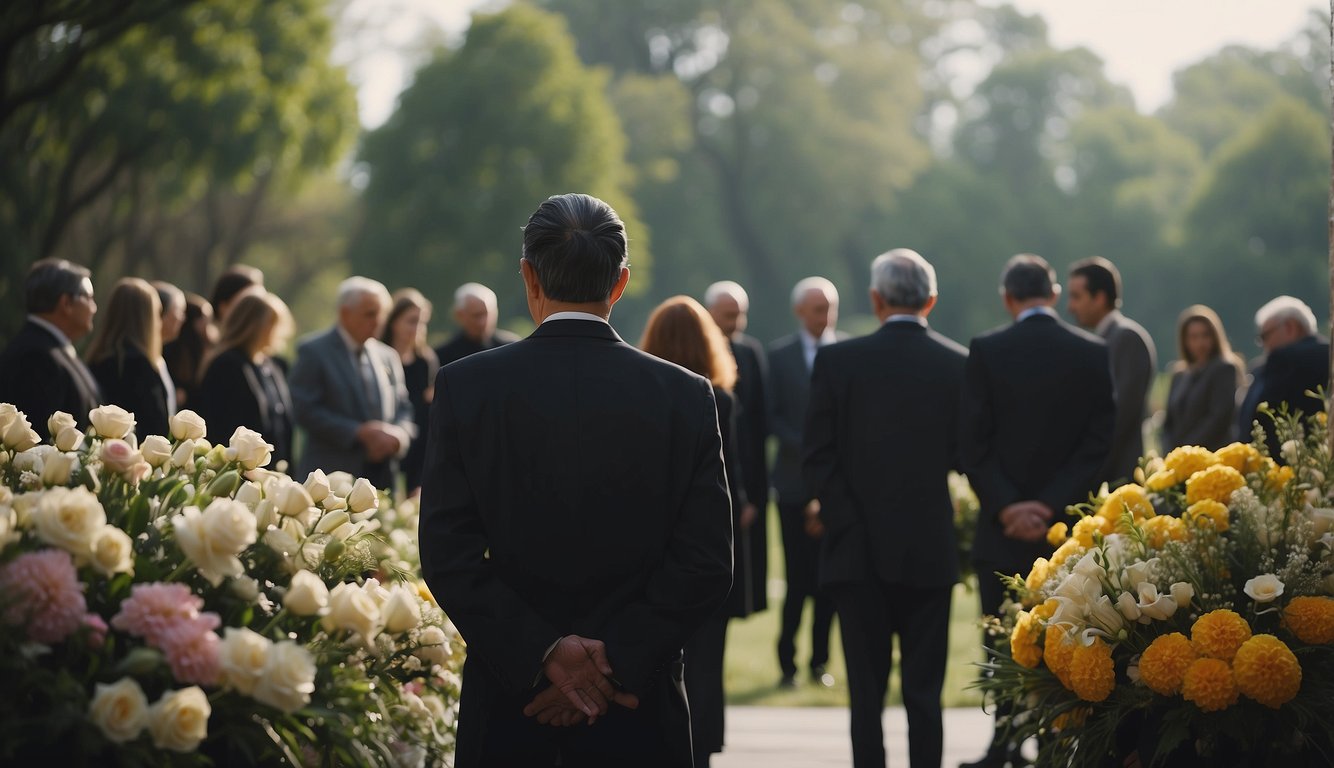
When attending funeral visitations, it’s essential for me to be mindful of any special circumstances that may alter traditional practices. In recent times, these have mainly revolved around health concerns and different service types.
Visitation Etiquette During COVID-19
With the onset of COVID-19, I’ve understood it’s crucial to follow guidelines set by health officials and the funeral director to ensure the safety of all guests at the visitation. Here are some key points:
- Masks and Social Distancing: Wearing a mask and maintaining distance between attendees may be required.
- Reduced Capacity: There might be a limit on how many people can attend the visitation at once.
- Virtual Attendance: Some funerals offer the option to virtually attend, which I find to be a safe alternative if I’m feeling unwell or uncomfortable attending in person.
Attending a Cremation Service
When the deceased has opted for a cremation rather than a burial, the visitation can be a bit different. Here’s what I keep in mind:
- Timing: I ensure I’m aware of whether the visitation happens before or after the cremation, as this will affect whether an open casket is present.
- Memorial Options: Sometimes, instead of a body, there may be an urn. In such cases, I pay my respects by viewing any photographs or memorial displays that are set up.
Throughout these special circumstances, I remember the importance of being respectful, offering condolences, and being supportive to the grieving family, as these are the core aspects of funeral visitation etiquette.
Frequently Asked Questions
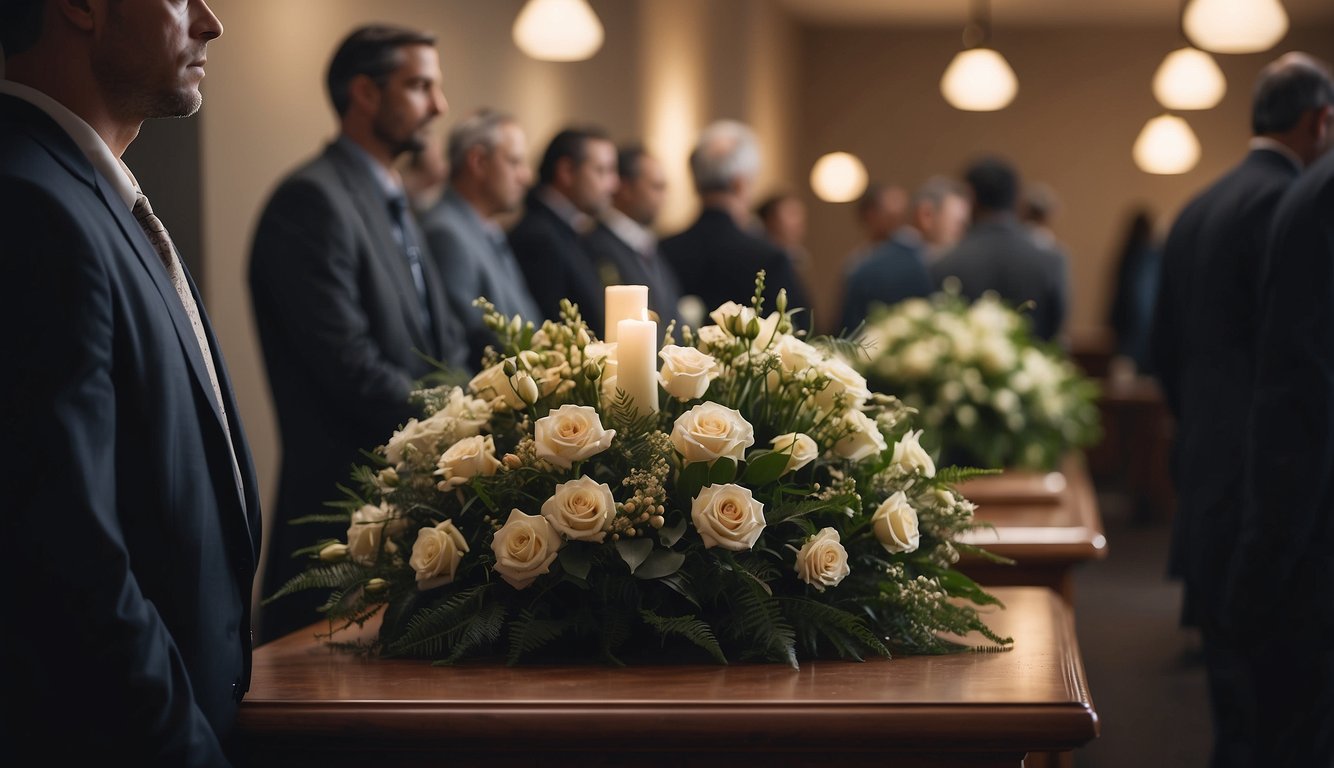
When attending a visitation, understanding etiquette can help me show my respects appropriately. I’ll cover how long I should stay and whether it’s suitable to bring children.
How Long Should You Stay at a Visitation?
It’s thoughtful to stay long enough to offer my condolences to the family, usually around 15 to 30 minutes. If I’m closer to the deceased or their family, a longer stay might be appropriate to provide support.
Is It Acceptable to Bring Children?
Bringing children is generally acceptable, particularly if the child is part of the immediate family or was close to the deceased. It is important to ensure children are well-behaved and prepared for the solemn nature of the event. If I have concerns about my child’s ability to stay calm, it may be best to arrange childcare instead.
Concluding Thoughts
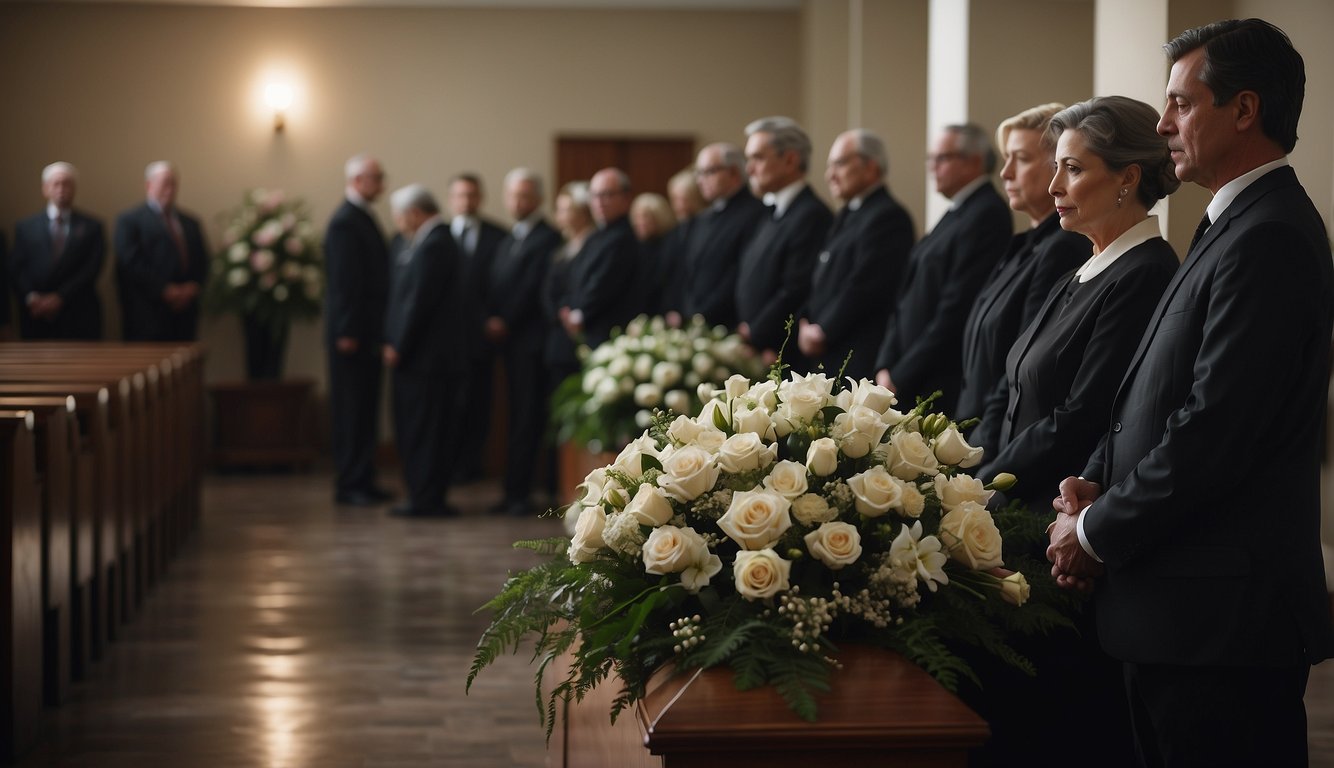
When I attend a funeral visitation, I always aim to offer sympathy and support to the bereaved family in a respectful and considerate way. The customs around these gatherings may vary, but the cornerstone of funeral visitation etiquette stays the same: it’s all about providing comfort in a time of loss.
- Dress Appropriately: I make sure my attire is subdued and appropriate for the solemn occasion. It’s a sign of respect to the family and the deceased.
- Be Mindful of Time: I stay mindful of the time I spend at the visitation. A brief and sincere expression of condolence is appreciated.
- Expressing Condolences: I choose my words with care when expressing my sympathies. A simple “I’m sorry for your loss” or “My thoughts are with you” often holds more weight than an elaborate speech.
- Body Language: When words fail, a warm handshake or a comforting touch on the arm can speak volumes.
Ultimately, my presence at a visitation is a gesture of solidarity with those mourning. I remember that it’s not about me; it’s about easing a small part of the immense burden of grief carried by those left behind. Whether I’m an acquaintance or a close friend, I aim to walk away knowing I’ve offered a bit of comfort in whatever way I can.
FAQ – Funeral Visitation Etiquette
What is the appropriate attire for a funeral visitation?
Dress conservatively and choose subdued colors. While black is a traditional choice, other dark colors or modest attire that shows respect for the occasion are also acceptable.
How long should I stay at a visitation?
There’s no set time requirement, but a brief visit of 15 to 30 minutes to pay your respects and offer condolences to the family is generally sufficient.
Should I bring anything to a funeral visitation?
It’s thoughtful to bring a sympathy card, and you may also consider sending flowers or making a donation to a charity favored by the deceased or their family.
Is it acceptable to view the body at a visitation if there’s an open casket?
Yes, if there’s an open casket, it’s customary to approach respectfully, pause for a moment of silence or prayer, and then move on to allow others the same opportunity.
If you enjoyed reading about Funeral Visitation Etiquette, check out our other articles:
- Bowling Etiquette 2024: Tips for Polite Play on the Lanes
- Surf Etiquette 2024: Key Rules for Sharing the Waves
- Tennis Etiquette 2024: Key Rules and Polite Play for Beginners
- Laundromat Etiquette 2024: Tips for a Harmonious Wash Day
Feel free to also check out our other Articles from the category “Etiquette & Manners“ and don’t forget to follow us on Pinterest.

